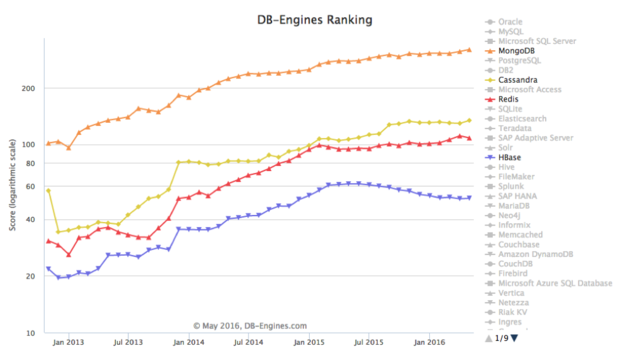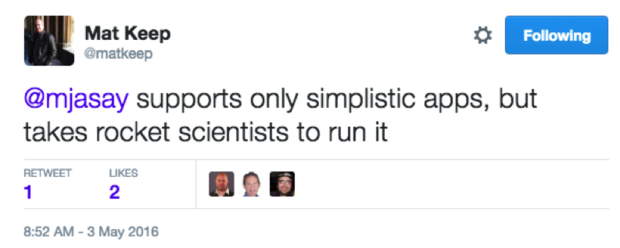Individual and Systemic Trust: Keys to Next Generation Partner Ecosystems
What is the number one ingredient for successful partnerships? Trust; both individual and systemic.
What is the number one reason alliances and acquisitions (the deepest type of partnerships) fail? Inability to integrate cultures; trust is the number one ingredient underpinning culture.
Individual Trust is defined as congruence between what is said and what is done. Trust is an attitude that allows people to rely on, have confidence in, and feel sure about other people in the organization.
In a recent article for HostingCon, Dave Gilbert, former CEO of SimpleSignal, talked about the lack of trust in IT organizations as a barrier to growth. “I believe the difference between companies that execute well and those that don’t make it is the leadership’s ability to build trust over time,” said Gilbert. “Companies with a high trust culture experience a far lower churn rate and much higher employee engagement with the enterprise.”
Systemic trust is the ability of individuals in one or more organizations to trust another organization, for example a group of different types of channel partners, alliances, and a developer community to trust and want to grow with a vendor. It is the degree to which individuals and groups in an organization have the confidence to sustain a partnership with the organization and the personnel in the organization.a
Both forms, individual and systemic trust, are fundamental for the success of long term partnerships. Systemic trust is critical when multiple individuals in a company are partnered with another company’s teams – and everyone is unable to know and trust every other individual in the organization. The individuals then must rely on their sense of systemic trust.
At HostingCon in July we will share successful partnership use cases to determine the key factors underpinning them. Trust is a basic need just like water to every human partnership. It is one of the top 10 challenges explicitly stated in the HostingCon State of the Cloud and Service Provider Ecosystem survey; and a sub topic in three others: building effective communication among vendors and partners, balancing channel conflict with both direct and indirect and competitive partners and aligning partnership goals.
So, how do we build individual trust in our channel partnerships and ecosystems?
Trust building is focused on both the present and future cooperation of two people. In order to create trust, people must believe you are trustworthy. This can be a short or long process. However, it can be destroyed in a minute often if earning trust is viewed as a means to an end versus a long term relationship.
Building trust must be perceived as authentic or people will not believe you are trustworthy and want to engage with you. Express yourself authentically, speak carefully, accurately, clearly, and honestly to gain and sustain a full and accurate common understanding.
Trust relies on engagement with individuals and continued reciprocal relations (or relationship building) to earning long term trust. To create trust:
- Don’t promise more than you can deliver.
- Describe your doubts, risks, and events beyond your control.
- Don’t over commit.
Trust and values are linked; it’s important to understand others’ values and align those in a partnership when possible.
Trust breaks down when:
- People perceive authority versus a relationship
- There are continuous conflicts with individuals
- Continued uncertainty in a partnership
- An inability of a person to communicate or manage risk
Specific tips on creating trust in business partnerships:
- Work transparently, keeping others up-to-date on progress and problems
- Allow others to observe the progress of your work
- Involve others from the partner in key decisions
- Expose hidden agendas and personal interests of both sides when needed
- Understand what is being proposed, described, and discussed
- Be clear on the expectations of others, problems you might encounter, the risks involved, changes that may occur, what you are agreeing to, others you may need to rely on, and your preparation and ability to meet commitments
- Establish and maintain clear expectations.
- Make and keep promises, do what you say and deliver results.
- Hold yourself and others you depend on accountable
- Go beyond what you promised when you can
- Proceed in stages, and commit only as much as you can foresee
Systemic trust is also critical for sustained partnerships and for a vendor to maintain a robust, strong and growth oriented partner ecosystem. In addition, systemic trust is a fundamental ingredient for innovation.
One of the biggest ways organizations drive innovation and differentiation with their partnerships and channels is through collaboration. Collaboration is also based on trust. To drive collaborative partnerships, the product, services or solution vendor must value partnering and building high levels of trust with partners at the senior levels of the organization.
Rigorous standards for maintaining that trust must be built into the company culture, the processes, communications, and the technology.
Examples include:
- Company culture: Senior executives and the CEO of a company articulate the importance of partnering internally to the employees, to the partner channel, and to customers on a regular basis through customer briefings, investor calls, and industry analyst conversations.
- The company lives by a model that rewards partnerships who bring value to the company.
- Company process: An example of a strong company rule and process would be that no employee from a partner is hired unless the partner has been communicated with by a VP in the company; or the delivery to a joint customer base of a blended partner/vendor value proposition.
- Technology enabler: An example of a technology enabling collaboration tool for developer partnerships is SLACK, this tool is enabling incredible collaboration across individuals and companies; and the ability to track history and learn from the collaboration initiative over a period of time.
- Corporate governance: Corporate governance with partnerships and channel is another measure to foster systemic trust and collaboration. Examples include Global Advisory Councils, Partner level attainment and reward, and Annual Business planning and quarterly business reviews.
In a relationship, people have “free will” and use it to choose whether they will give trust to another person. However, in some cases it’s important for both the vendor and the partner executive sponsor to dictate the goals and expectations for the systemic trust in the partnership. This will then pave the way for individual trust to expand within the two organizations.
Last, one of the most critical relationships for a sustained successful partnership is the executive to executive sponsorship for the relationship.
What does this mean?
- Sponsors talk straight and honestly with one another, and confront the reality of the partnership or the situation as needed.
- They clarify expectations on a sustained and regular basis, review progress, and enforce achievement of the teams’ mutual key objectives.
- They create transparency by listening first, showing loyalty, and fixing something that went wrong.
- They keep commitments and ensure both teams deliver results.
- They take the time to continue deepening that individual executive relationship.
Trust is at the core of our own personal success with partnerships. It’s at the core of individual vendor and partner sales and technical teams’ revenue growth. It’s at the core of executive’s partnering results.
Trust is at the core of virtually every aspect of our vendor and partner success.
This article is brought to you by HostingCon, the Cloud and Service Provider Ecosystem event. Join us in New Orleans, Louisiana July 24-27, 2016 to hear Theresa and other thought leaders talk about issues and trends in the cloud, hosting and service provider ecosystem.
Source: TheWHIR




